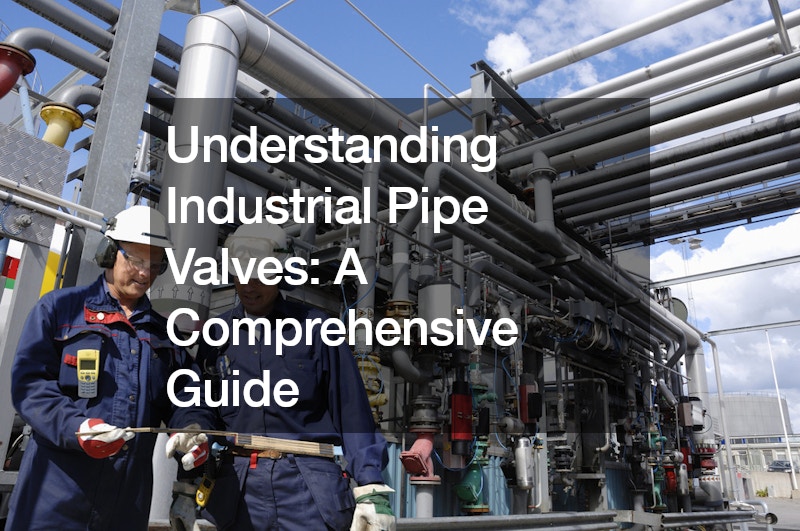Industrial pipe valves play a crucial role in regulating fluid flow within various systems. These valves come in different types, each serving specific functions to ensure smooth operation and safety. In this comprehensive guide, we will delve into the various types of industrial pipe valves and their applications.
1. Gate Valve:
The gate valve is one of the most common types of industrial pipe valves. This valve operates in a linear motion, allowing for the start or stoppage of fluid flow within a system.
Gate valves are commonly used in a wide range of applications, including air, fuel gas, steam, and hydrocarbon services. They provide excellent shutoff capabilities, making them indispensable in many industries.
2. Globe Valve:
Globe valves are designed to control fluid flow and provide leak-tightness in systems where precise regulation is necessary. Unlike gate valves, globe valves offer better shut-off capabilities and are often used in critical flow control applications. While costlier than gate valves, their superior performance justifies the investment in various industrial settings.
3. Check Valve:
Check valves are essential for preventing backflow in piping systems. These valves operate automatically, allowing fluid to flow in one direction while preventing reverse flow. They are crucial in ensuring piping systems’ integrity and efficiency by maintaining fluid flow in the desired direction.
4. Plug Valve:
Plug valves are rotary motion valves that utilize a tapered or cylindrical plug to start or stop fluid flow. Known for their bubble-tight shutoff capabilities, plug valves are widely used as on-off stop valves in various industrial applications. They are capable of withstanding high-pressure and temperature conditions, making them suitable for demanding environments.
5. Ball Valve:
Ball valves are quarter-turn rotary motion valves that utilize a ball-shaped disk to regulate fluid flow. These valves offer quick and reliable operation, requiring only a 90° turn of the valve handle to open or close the flow. Ball valves are compact and lightweight, making them suitable for applications with limited space.
6. Butterfly Valve:
Butterfly valves are another type of quarter-turn rotary motion valve used for flow regulation. Featuring a short circular body, butterfly valves are compact and lightweight, making them ideal for large valve applications. They provide efficient flow control while requiring minimal space, making them popular in various industries.
7. Needle Valve:
Needle valves are designed to control flow in small-diameter piping systems precisely. They feature a sharp-pointed conical disk and matching seat, allowing for accurate regulation of fluid flow. Needle valves are commonly used in applications where precise control is essential, such as laboratory equipment and instrumentation systems.
8. Pinch Valve:
Pinch valves, also known as clamp valves, operate through linear motion and are used to start, regulate, and stop fluid flow. These valves utilize a rubber tube and pinch mechanism to control the flow, making them ideal for pneumatically handling slurries and systems conveying solid materials.
9. Pressure Relief Valve:
Pressure relief valves are crucial for protecting equipment and piping systems during overpressure events. These valves release pressure or vacuum at pre-defined set points, preventing equipment damage and ensuring personnel safety. Pressure relief valves are essential in ensuring industrial systems’ reliability and integrity.we;ll delve into the various types of industrial pipe valves and their applications, providing actionable insights and specific examples to enhance your understanding.
Gate Valve:
The gate valve is one of the most common types of industrial pipe valves. These valves are designed for on/off service, providing a tight seal when fully closed. They are commonly used in applications requiring a straight-line flow of fluid and minimum restriction, such as in water distribution systems, oil and gas pipelines, and wastewater treatment plants. When operating gate valves, it’s essential to ensure they are fully open or fully closed to prevent damage to the valve.
Actionable Tip: Regularly inspect gate valves for signs of leakage or corrosion. If a gate valve fails to close properly, consider replacing it with a globe valve for improved shut-off capabilities.
Globe Valve:
Globe valves are another industrial pipe valve used for flow regulation and shut-off. Unlike gate valves, globe valves have a more complex design, consisting of a globe-shaped body and a movable disk. These valves provide better shut-off capabilities than gate valves and are commonly used in applications where precise control of flow is required, such as in steam systems, chemical processing plants, and HVAC systems.
Actionable Tip: When selecting globe valves for specific applications, consider factors such as pressure ratings, temperature limitations, and compatibility with the fluid being transported. Opt for globe valves with metal-to-metal seating for enhanced durability and longevity.
Check Valve:
Check valves are essential for piping systems to prevent backflow and protect equipment from damage. These valves allow fluid to flow in one direction while preventing reverse flow. Check valves are commonly used in applications where backflow prevention is critical, such as in sewage systems, pump discharge lines, and boiler feedwater systems.
Actionable Tip: Regularly inspect and check valves for signs of fouling or obstruction, as these can impede proper valve operation. Consider installing dual-plate check valves for applications with high flow rates and minimal pressure drop.
Ball Valve:
Ball valves are versatile industrial pipe valves that offer quick and reliable shut-off capabilities. These valves feature a spherical closure element (ball) with a hole in the center, allowing for smooth and precise control of flow. Ball valves are commonly used in applications requiring tight shut-offs, such as in chemical processing plants, petroleum refineries, and water treatment facilities.
Actionable Tip: Avoid excessive torque or force when operating ball valves, as this can damage the valve’s internal components. Consider using trunnion-mounted ball valves for high-pressure applications, which offer improved stability and performance.
Butterfly Valve:
Butterfly valves are quarter-turn industrial pipe valves widely used for flow regulation and isolation. These valves feature a flat circular disc (butterfly) that rotates around the valve stem to control flow. Butterfly valves are suitable for applications where space is limited, such as in HVAC systems, water distribution networks, and fire protection systems.
Actionable Tip: Ensure proper alignment and support to prevent stress and distortion when installing butterfly valves. Consider using resilient-seated butterfly valves for applications with abrasive or corrosive fluids, as they offer superior sealing and durability.
In conclusion, understanding the different types of industrial pipe valves and their applications is essential for ensuring piping systems’ efficient and reliable operation. By implementing the actionable tips and considering the suggested alternatives provided in this guide, professionals can make informed decisions when selecting, installing, and maintaining industrial pipe valves.
.




